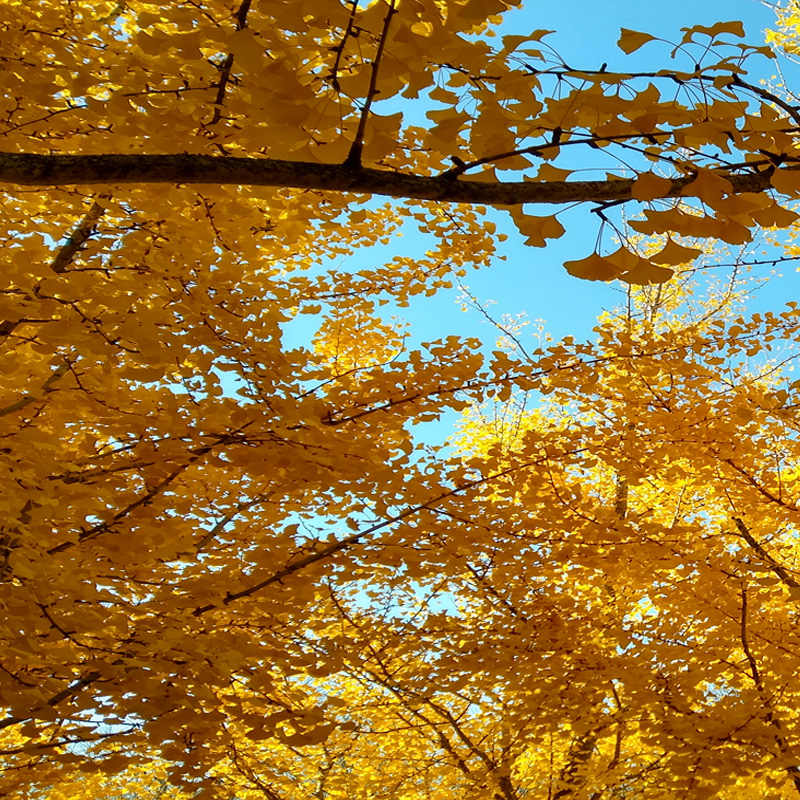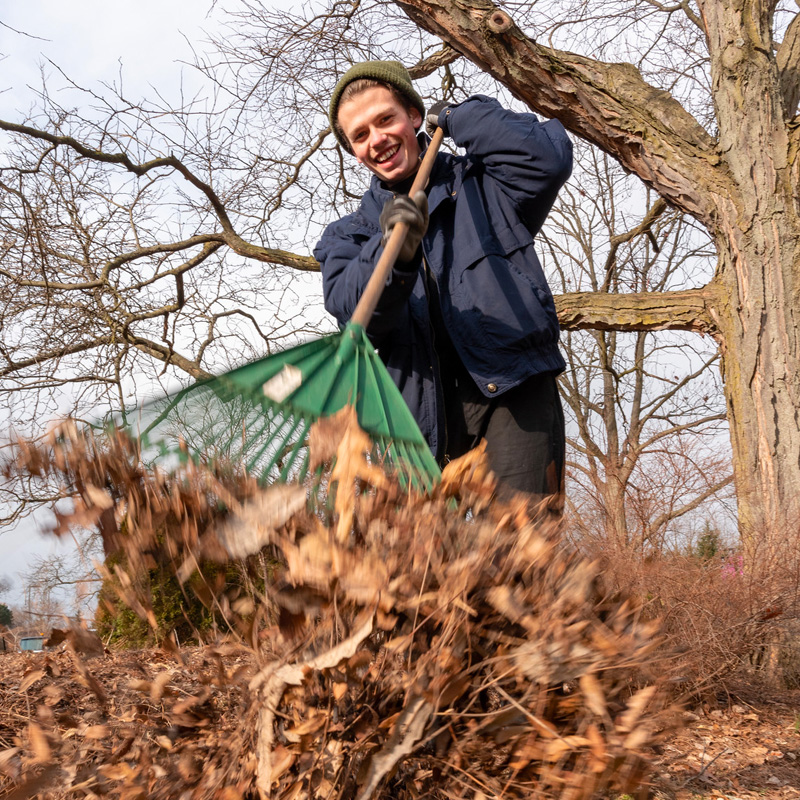

Tips & Techniques
Using your fall leaves to help the environment
When you think of autumn, chances are the lovely fall colors come to mind—and not the leaves that end up on your lawn or in your garden beds. Here are some ways you can use your leaves to support your plants and wildlife instead of bagging the leaves up and leaving them for collection:

Help pollinators survive the winter
An increasing number of people are trying to #Leavetheleaves. Try gently raking the leaves from your lawn and moving them to your perennial beds. That way, you’re allowing for a more natural cycling of nutrients—and providing habitat and a food source for wildlife including insects.
Soon-to-be butterflies, for instance, take shelter in the winter under or on leaves, in the form of eggs, larva (caterpillars), or pupa (chrysalis). For example, the beautiful swallowtail butterflies you may see flitting around the Chicago Botanic Garden in the summer spend their winters as chrysalis, disguised as dried leaves. Leaving your yard leaves allows butterflies and other pollinators to complete their life cycle and become part of the larger ecosystem—insects, for instance, are a food source for birds and other animals.
Make mulch

You can also shred the leaves and use them as mulch for perennial and garden beds after the ground has frozen hard. If you don’t have a huge amount, you can shred whole leaves in a garbage can with a weed whacker; don’t forget to use safety goggles. For larger amounts, use a lawn mower to shred the leaves.
Place the shredded leaves at the base of tender perennials. Frames of wire or burlap can be constructed around larger plants such as hydrangeas, rhododendrons, and roses, and loosely stuffed with shredded leaves around the base of plants. This should be done after temperatures have remained consistently below freezing to keep the soil at a uniformly cold temperature and prevent roots from freezing and thawing. Applying winter mulch too early will encourage the soil to remain warm.

Lawn tip
If you let the leaves sit for the winter, they may smother your lawn, especially if it was seeded earlier this fall and is just getting established. If the ground is too soft to push a mower over, carefully rake some of the leaves off the new grass before collecting them. If a mower leaves ruts as you push it, the area should not be mowed.
Build your compost pile
Keep the compost pile active by adding layers of green material (grass clippings and frost-killed annuals or perennials) and brown, dried material (fallen leaves, shredded twigs, and dried grasses) with small amounts of soil, fertilizer, and moisture. Turn regularly. Keep diseased material out of the pile. Remember that shredded leaves decompose more quickly in a compost pile.
Composted leaf mulch reduces soil temperatures in the summer, retains moisture, and suppresses weeds. It is a valuable soil amendment and adds a finished look to garden beds. Mulched areas around trees and shrubs eliminate the possibility of mechanical injury to plants caused by lawn mowers or string trimmers. It is important not to apply mulch deeper than 2 to 4 inches to avoid suffocating plant roots. Composted leaf mulch should be kept from making direct contact with barks and stems of plants to avoid disease problems and to discourage small rodents from burrowing next to the trunk.
For more plant advice, contact the Garden’s Plant Information Service, Click here to show mail address

